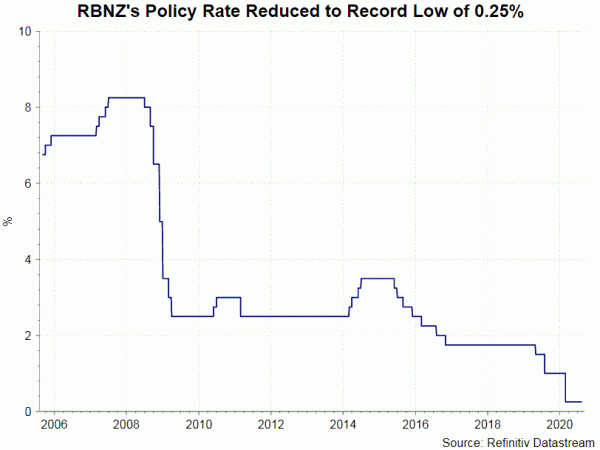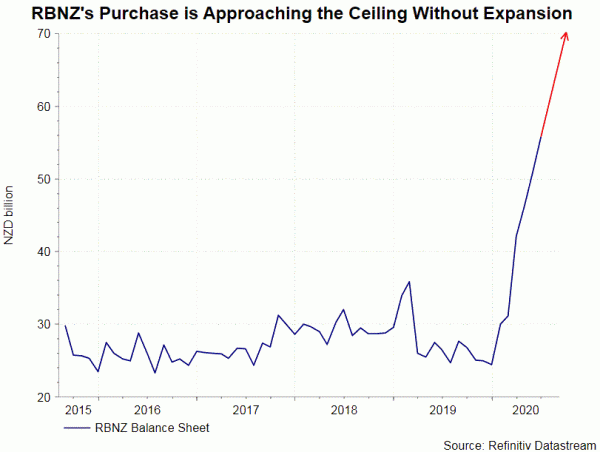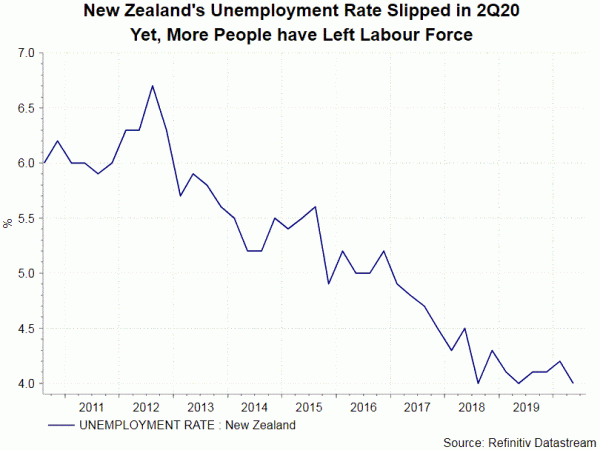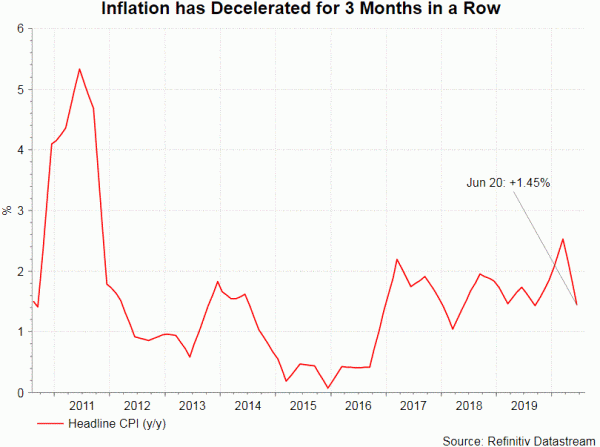We expect RBNZ to leave the OCR unchanged at 0.25% this week. It will likely increase the size of the Large-Scale Asset Purchase (LSAP) Program (QE) to NZD 80-90B from the current NZD 60B. The accompanying statement would contain a dovish tone, with policymakers discussing more alternative policy tools to stimulate the economy.
Recording no locally transmitted coronavirus cases for 100 days, New Zealand might have won the battle on the pandemic. However, the economic challenge remains a tough one. At Alert Level 1, New Zealanders can return to work, school, sports and domestic travel, and people can get together with as many people as desired. Yet, the border remains closed and the virus is uncontained outside the country. The uncertainty remains high and risks to economic recovery are skewed to the downside. Back in June, RBNZ pledged to “outline the outlook for the LSAP program and our readiness to deploy alternative monetary policy tools in our August Statement”, adding that they remain “committed to meeting our inflation and employment mandate”. We expect a slightly more dovish message will be delivered at the upcoming meeting.
Following a -75 bps cut in March, the policy rate has been staying at the record low of 0.25%. We believe the rate will remain unchanged this month. However, policymakers have never ruled out the possibility of negative interest rates. We look for more guidance on the interest rate path this month, in particular market expectations of a negative OCR have increased recently. In May, RBNZ doubled the size of QE to NZD 60B and extended the program for a year. The pace of purchases since March suggests the ceiling will be reached soon without an increase. We expect the central bank to increase to lift the ceiling to NZD 80-90B this week.
Major economic data suggest that more stimulus measures are needed to support the recovery. Headline job data surprised to the upside in 2Q20. The unemployment rate unexpectedly slipped to 4% from 4.2% in the prior quarter. This had beaten consensus of a rise to 5.8%. The number of jobs contracted -0.4% during the second quarter, following a +0.7% previously. The fall was also less than consensus of -2%. On the flip side, however, the participation rate was down -0.8 parentage point to 69.7, suggesting more people had left the labor force amidst recession. On wage, the labor cost index eased to 1.8% y/y, from +2.4% in 1Q20. From a quarter ago, the index eased to +0.2%, from +0.3% previously. Both readings came in weaker than expectations.
On inflation, headline CPI decelerated sharply to +1.5% y/y in 2Q20, from +2.5% a month ago. From a quarter ago, CPI contracted -0.5%, following a +0.8% increase in the first quarter. Two-year inflation expectations improved to +1.43% in the third quarter from +1.24% previously. Yet, this remains below the midpoint of RBNZ’s inflation target range of 1-3%.
Both the job market and inflation data suggest that New Zealand’s recovery is yet to be in firm footing. Moreover, given the uncertainty of the coronvirus pandemic and global economic recovery, there is a need for RBNZ to add more easing. Besides QE expansion and discussions on negative rate, the members might explore the pros and cons of alternative policy tools, such as yield curve control and foreign asset purchases.

















